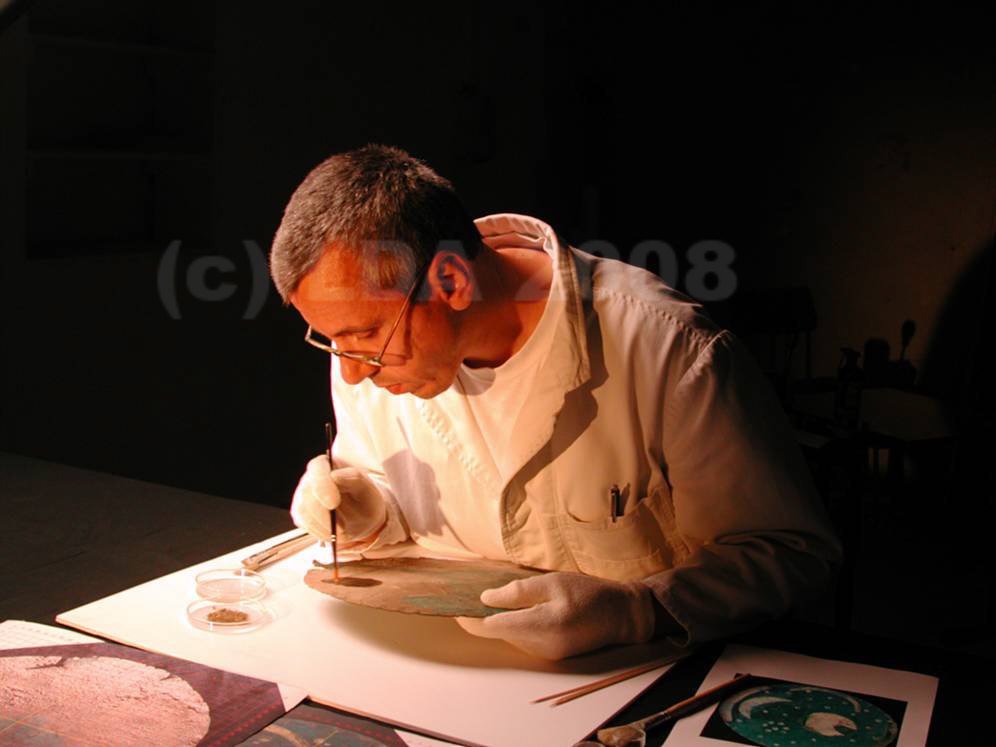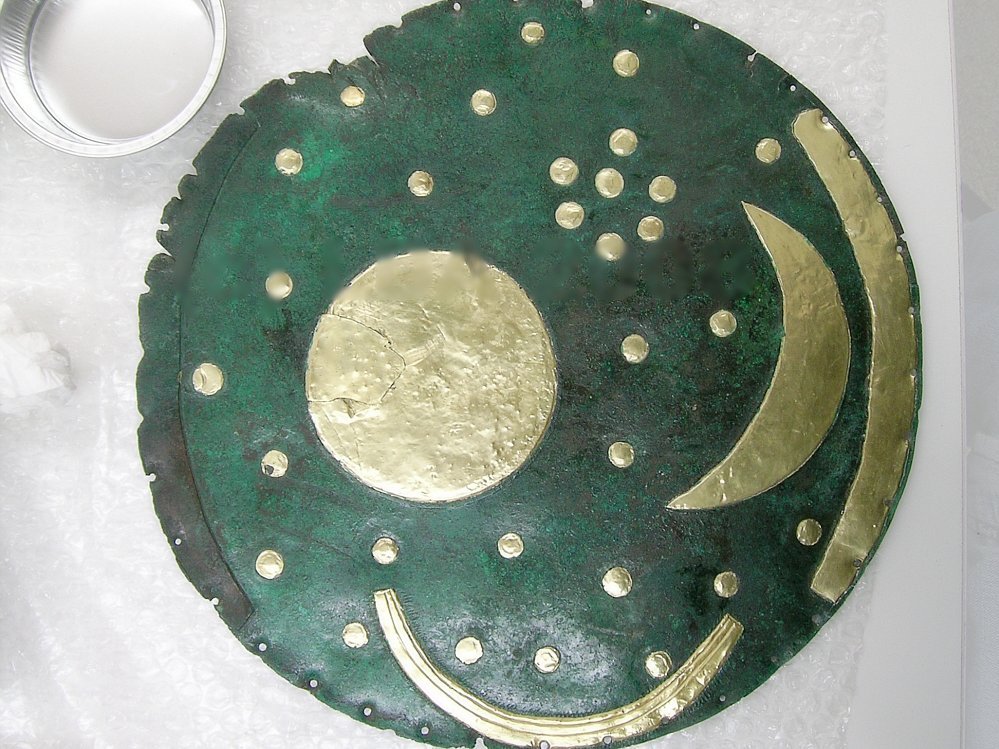Conservation
Removal of Adhering Soil and Corrosion
The conservation work on the Nebra Sky Disc began a few weeks after it was secured in 2002. After a thorough photographic and microscopic examination, the adhering soil was removed first so that the original surface could be more closely examined.
Mainly on the back, substantial remains of the soil from the site had been preserved. It was intensely fused (»cemented«) with the corrosion of the metal. Partly mechanically, partly with a mixture of ethylene glycol, ethanol, and water, the clay-sandy soil residues were removed over weeks of work. The soil remains were carefully stored in order to examine them later for geological characteristics.
The gold surfaces caused considerable difficulties. They were covered with greenish, glass-hard corrosion layers of malachite. These did not originate directly from the gold sheets, but had diffused from the bronze parts of the surface and condensed on the precious metal. They could only have been removed mechanically if one had accepted slight damage to the soft gold underneath. Since this was out of the question, a chemical process was chosen. After lengthy tests on model surfaces, the choice fell on a specially developed active-agent paste. It contained the chelating agent EDTA, a formic acid/formate buffer, ethanol, and water and was thickenedto a paste with pyrogenic silica. The agent could be applied with a brush specifically to those areas to be cleaned, operate there, and then be removed again together with the blue reaction products of the corrosion. This ensured that the malachite was only affected on the gold surfaces, but not on the bronze. There it should remain: Because of its prolonged storage in the ground some parts of the disc are completely corroded despite maintaining the shape. To remove this corrosion would have meant a massive interference with the substance.
Repairing Damage
Parts of the Sky Disc were seriously damaged during the improper robbery excavation. Under the blows of the digging tool, a modified fire-fighter’s pickaxe, part of the upper rim was bent whereby a star fell off. The pickaxe had also torn a wedge out of the gold sheet of the large sun or full moon motif. Both the star as well as the gold sheet fragment could later be recovered. While the star was barely damaged, the gold sheet existed only in a badly crumpled and twisted state. To reinstate it would have made little sense. It is kept for study purposes. In order to present the Sky Disc in an aesthetically satisfying, closed state, a new sheet of gold of the same composition was made. Exactly cut to size, inserted precisely into the defect with a special adhesive made of silicone rubber, it can still be removed at any time if required.
Here you can find the film from the »Museum exklusiv« series of the State Museum of Prehistory »Die Himmelsscheibe von Nebra: Beschädigungen« (German version only).





